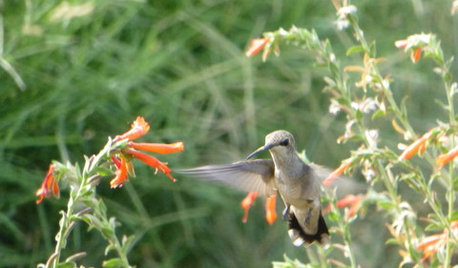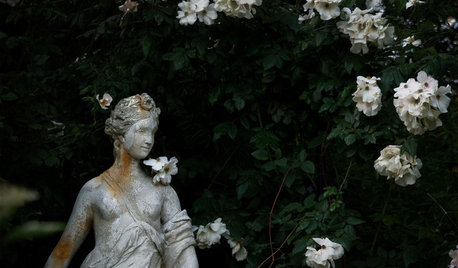Virused roses in Europe
henry_kuska
21 years ago
Related Stories

GARDENING GUIDESWhat Kind of Roses Should You Grow?
Want to add the beauty of roses to your garden? Find out which ones, from old-fashioned to modern, are right for you
Full Story
GARDENING GUIDESLearn the Secret to Bigger and Better Roses
Grow beautiful roses using both ordinary and unusual soil amendments
Full Story
WINTER GARDENINGPruning Secrets for Exquisite Roses
Encourage gorgeous blooms year after year with this time-tested advice on how to prune your rosebush in winter for health and shape
Full Story
DECORATING STYLES18 Ways to Bring English Country Charm Home
From topiaries and climbing roses to toile and tea, these design ideas can skew cozy casual or manor formal
Full Story
ARCHITECTURERoots of Style: Midcentury Styles Respond to Modern Life
See how postwar lifestyles spawned a range of styles, including minimalist traditional, ranch, split level and modern shed. What's next?
Full Story
HOUZZ TOURSHouzz Tour: Fairy Tale Gatehouse in Minnesota
This cozy cottage in Minnesota blends fine antiques with reclaimed materials from bridge pilings, city streets and Midwestern barns
Full Story
GARDENING GUIDESSweet Serendipity: Opening to Happy Garden Discoveries
Unplanned nature scenes can be unbelievably beautiful; you just need to know how to look
Full Story
LANDSCAPE DESIGNGet the Mystery of a Gothic Garden for Yourself
Create an enchanting and tranquil scene with the stonework and wayward plantings of Gothic garden design
Full Story
HISTORIC HOMESMust-Know Modern Homes: The Lovell Beach House
R.M. Schindler redefined architectural space through form. See how this striking California home influenced modern architecture to come
Full Story
EARTH DAYThe Case for Losing the Traditional Lawn
Work less, help the environment and foster connections by just saying no to typical turf
Full StorySponsored



jon_in_wessex
GaryRey1000
Related Discussions
New review (2016) of one of the rose mosaic viruses -ApMv
Q
A link between rose rosette virus and animal infecting viruses?
Q
New general article about rose viruses from National Clean Plant Netwo
Q
Title: Survey of six rose viruses in a rose virus collection 3-7-2018
Q
Pierre_R
henry_kuskaOriginal Author
henry_kuskaOriginal Author
Field
henry_kuskaOriginal Author
henry_kuskaOriginal Author
henry_kuskaOriginal Author
henry_kuskaOriginal Author
henry_kuskaOriginal Author
henry_kuskaOriginal Author
Pete_Flowers
henry_kuskaOriginal Author
5400jana